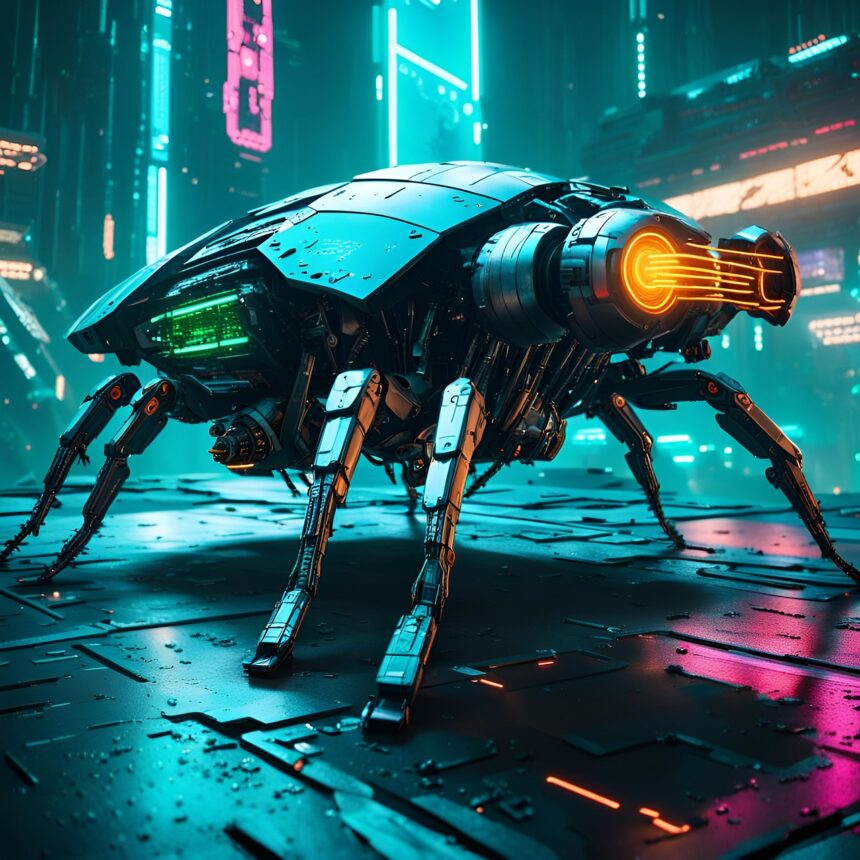AI-Powered Cybersecurity: The Future of Enterprise Protection
In today’s rapidly evolving digital landscape, cybersecurity has become a critical concern for enterprises worldwide. As cyber threats grow in sophistication and frequency, traditional security measures often fall short in protecting sensitive data and infrastructure. Enter AI-powered cybersecurity, a transformative approach that leverages artificial intelligence to enhance threat detection, response, and prevention.
- Understanding AI-Powered Cybersecurity
- Why Enterprises Need AI-Powered Cybersecurity
- Step-by-Step Strategies for Implementing AI-Powered Cybersecurity
- 1. Assess Your Current Security Posture
- 2. Define Clear Objectives
- 3. Choose the Right AI Tools and Platforms
- 4. Data Preparation and Integration
- 5. Train and Test AI Models
- 6. Deploy and Monitor Continuously
- Real-World Examples of AI in Enterprise Security
- Checklist for Enterprise AI Cybersecurity Implementation
- FAQs about AI-Powered Cybersecurity
- 1. How does AI improve threat detection compared to traditional methods?
- 2. Can AI completely replace human cybersecurity experts?
- 3. What are the challenges of implementing AI in cybersecurity?
- 4. How does AI handle false positives in threat detection?
- 5. Is AI cybersecurity suitable for small and medium enterprises (SMEs)?
- 6. What role does AI play in incident response?
- 7. How do enterprises ensure the ethical use of AI in cybersecurity?
- Conclusion
Understanding AI-Powered Cybersecurity
AI-powered cybersecurity integrates machine learning, deep learning, and advanced analytics to identify and mitigate cyber threats in real-time. Unlike conventional systems that rely on predefined rules and signatures, AI systems continuously learn from data patterns, adapting to new and unknown attacks.
Key Components of AI in Cybersecurity
- Machine Learning Algorithms: These algorithms analyze vast amounts of data to detect anomalies and predict potential threats.
- Behavioral Analytics: Monitoring user and system behavior to flag unusual activities that might indicate a breach.
- Automated Threat Response: AI can initiate responses to threats automatically, reducing reaction time and limiting damage.
- Natural Language Processing (NLP): Used to analyze and interpret unstructured data such as emails or chat logs for phishing and social engineering attacks.
Why Enterprises Need AI-Powered Cybersecurity
Enterprises face an increasing volume of cyber threats, including zero-day attacks, ransomware, and insider threats. Traditional security tools struggle to keep pace due to the sheer scale and complexity of these attacks.
- Scalability: AI systems can process and analyze data at a scale unattainable by human analysts.
- Speed: Real-time threat detection and response dramatically reduce the window of vulnerability.
- Accuracy: AI reduces false positives by learning from data and context, improving overall security effectiveness.
- Cost Efficiency: Automating routine security tasks frees up valuable human resources for strategic initiatives.
Step-by-Step Strategies for Implementing AI-Powered Cybersecurity
1. Assess Your Current Security Posture
Begin by conducting a comprehensive audit of existing cybersecurity measures. Identify gaps where AI can provide significant enhancements.
2. Define Clear Objectives
Set specific goals such as reducing incident response time, improving threat detection rates, or automating routine monitoring tasks.
3. Choose the Right AI Tools and Platforms
Evaluate AI cybersecurity solutions that align with your enterprise’s needs, considering factors like integration capabilities, scalability, and vendor support.
4. Data Preparation and Integration
Ensure high-quality, relevant data feeds into AI systems. Integrate various data sources such as network logs, endpoint data, and threat intelligence feeds.
5. Train and Test AI Models
Work with cybersecurity experts and data scientists to train AI models on historical data, followed by rigorous testing to validate performance.
6. Deploy and Monitor Continuously
Roll out AI-powered tools in stages, monitor their effectiveness, and fine-tune models to adapt to evolving threats.
Real-World Examples of AI in Enterprise Security
Several leading organizations have successfully integrated AI into their cybersecurity frameworks:
- IBM Watson for Cybersecurity: Uses AI to analyze unstructured data sources, helping security teams identify threats more rapidly.
- Darktrace: Employs machine learning to detect anomalies in network traffic, enabling early detection of insider threats and zero-day exploits.
- Microsoft Defender Advanced Threat Protection: Combines AI and behavioral analytics to provide comprehensive endpoint protection.
Checklist for Enterprise AI Cybersecurity Implementation
- Conduct a thorough cybersecurity audit.
- Define clear AI integration goals.
- Choose AI tools that fit enterprise infrastructure.
- Prepare and integrate diverse data sources.
- Collaborate with data scientists for model training.
- Test AI models in controlled environments.
- Deploy in phases with continuous monitoring.
- Establish protocols for AI-driven automated responses.
- Train security teams on AI system capabilities.
- Regularly update AI models with new threat intelligence.
FAQs about AI-Powered Cybersecurity
1. How does AI improve threat detection compared to traditional methods?
AI analyzes large volumes of data in real-time and identifies subtle patterns that traditional signature-based systems may miss, enabling detection of unknown and evolving threats.
2. Can AI completely replace human cybersecurity experts?
No, AI augments human expertise by automating routine tasks and providing actionable insights, but human judgment remains essential for strategic decisions and complex incident responses.
3. What are the challenges of implementing AI in cybersecurity?
Challenges include data privacy concerns, the need for high-quality data, integration complexity, and the risk of adversarial attacks targeting AI models.
4. How does AI handle false positives in threat detection?
Through continuous learning and behavioral analytics, AI systems improve accuracy over time, reducing false positives and minimizing alert fatigue for security teams.
5. Is AI cybersecurity suitable for small and medium enterprises (SMEs)?
Yes, many AI cybersecurity solutions are scalable and customizable, allowing SMEs to benefit from enhanced protection without excessive costs.
6. What role does AI play in incident response?
AI enables automated threat containment, rapid analysis of attack vectors, and prioritization of response efforts, significantly reducing damage and recovery time.
7. How do enterprises ensure the ethical use of AI in cybersecurity?
By establishing transparent policies, ensuring data privacy, and regularly auditing AI systems for biases and unintended consequences.
Conclusion
The integration of AI into cybersecurity represents a paradigm shift in how enterprises protect their digital assets. By harnessing AI-powered cybersecurity, organizations can proactively identify threats, respond swiftly, and adapt to the ever-changing cyber threat landscape. Implementing AI-driven solutions with a strategic approach not only enhances security posture but also optimizes operational efficiency, safeguarding enterprises now and into the future.






